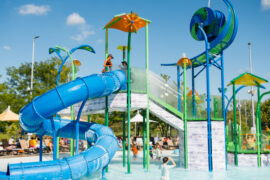A Comprehensive Guide to Northern Lighting for Parents
Welcome parents! Exploring the beauty of mother nature is an amazing way to instill a sense of wonder in your children and nothing does that better than the majestic spectacle of the Northern Lights. Let’s begin your enlightening journey through the fascinating world of Northern Lighting.
Understanding the Northern Lights
First, let us start by understanding what the Northern Lights actually are. Also known as Aurora Borealis, the Northern Lights are natural light displays in the Earth’s sky, predominantly seen in the high-latitude regions. Aren’t you excited already to introduce this mesmerizing part of the world to your children?
How Do the Northern Lights Occur?
The Northern Lights are a result of collisions between the Earth’s gaseous particles and charged particles from the sun. The variations in colour are due to the type of gas particles involved. The most common auroral color, green, is produced by oxygen molecules located about 60 miles above the earth. Isn’t science wonderful?
A Magical Sight for Children
Now, imagine the expression on your child’s face when they see this colorful dance of nature for the first time! This is not just a fun family outing; it’s a learning adventure, a science expedition, and a photo opportunity, all rolled into one!
Taking Your Little Ones to See the Northern Lights
Planning a trip to see the Northern Lights can seem daunting, but don’t worry! We have all the information you need to make this a memorable experience for both you and your children. From finding the best spot to watch these celestial lights to the ideal time for viewing and of course, ensuring your child’s comfort and safety during the expedition, this guide has it all! Stay tuned for more useful tips and tricks.

Choosing the Best Location
Draw a line around the globe and these locations fall within the ‘Auroral Oval’: Canada’s Yukon, Nunavut, Northwest Territories, Alaska, Iceland, Norway, Sweden, Finland, and the coasts of Greenland. Bright city lights can sometimes obstruct the heavenly display from view, so it’s best to find a location that’s as remote as possible. North-facing coastal areas are typically ideal.
Finding the Perfect Timing
The best time to see the Northern Lights is in the winter, due to the long periods of darkness and the frequency of clear nights. The lights are most commonly seen between 5 PM and 2 AM, but they have been known to light up the sky as early as 4 PM. Be prepared – this might require some past-bedtime-plan adjustments for your little ones!
Experience and Safety Tips
Wrap up warm, as the temperatures can drop quite a bit at night, especially in peak viewing conditions. Opt for layers rather than heavy, restrictive clothing. Try to prepare your children for the possibility that they may not see the lights – clouds, a full moon, or lack of solar activity can all interfere with the visibility.
A Learning Experience
Use this opportunity to teach your children about the earth, the solar system, and the scientists who discovered the phenomenon. A journey to see the Northern Lights can be a magical memory for your family, filled with wide-eyed wonder at the colorful spectacle played out in the night sky.
By following this guide, you’ll be able to turn the magical experience of watching the Northern Lights into a fun and educational adventure for your entire family. Happy viewing!
Preparing for Northern Lighting: Top 5 Tips for Parents
The northern lights, or Aurora Borealis, are a beautiful natural spectacle. As a parent, preparing for this exciting event can also become a memorable learning experience for your kids. Here are five key things to keep in mind while prepping for northern lighting.
1. Learn About Northern Lights
Firstly, educate your child and yourself about the phenomenon. Discover why it happens, its significances, and the best times to view it for an engaging and informative experience.
2. Check Northern Lighting Forecasts
Northern lighting does not occur every night. It is influenced by solar activity. Therefore, frequently check Aurora forecasts online. Websites and even mobile apps provide real-time updates and alerts for impending shows – an absolute essential to not miss out on the displays.
3. Dress Warmly
Northern lights typically appear during the colder months. Ensure to wear comfortable, warm layers to ward off the chill. Don’t forget hats, gloves, and boots for ultimate protection and comfort – especially important when outside for prolonged periods.
4. Choose a Dark Place
Prepare a perfect viewing spot. Areas with little to no light pollution are ideal, such as open fields, hill tops, or the outskirts of towns. Remember, safety first. Pick a place that’s secure and child-friendly.
5. Be Patient
Lastly and importantly, remind your kids (and yourself) that patience is key. It may take many hours for the lights to appear. Bring snacks, hot drinks, and some activities to stay occupied while waiting.
In conclusion, preparing for northern lighting can be a wholesome family activity with the right amount of knowledge, planning, and patience. Happy viewing!
For more great articles please see here. For more information see here
Disclaimer
The articles available via our website provide general information only and we strongly urge readers to exercise caution and conduct their own thorough research and fact-checking. The information presented should not be taken as absolute truth, and, to the maximum extent permitted by law, we will not be held liable for any inaccuracies or errors in the content. It is essential for individuals to independently verify and validate the information before making any decisions or taking any actions based on the articles.




